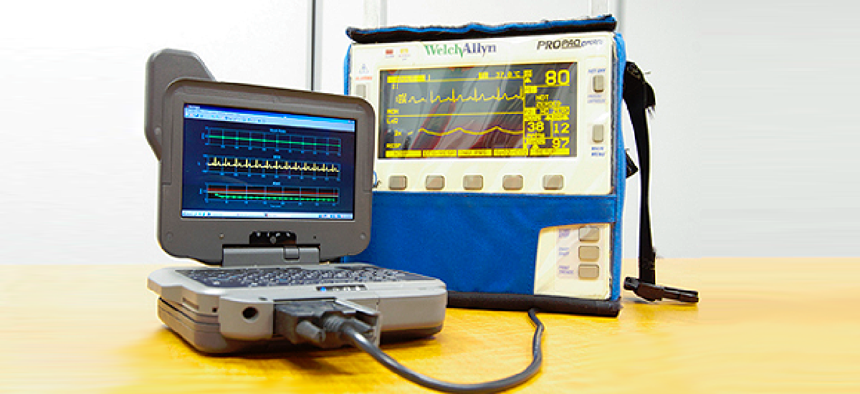New monitoring system for trauma patients could transform battlefield triage


Connecting state and local government leaders
The artificial intelligence-based system can detect when trauma patients need massive blood transfusions by collecting and analyzing, in real time, vital signs during pre-hospital transport.
As medical treatment for soldiers moves out of the hospital and onto the battlefield, one of hurdles medics face is identifying and stopping internal bleeding quickly enough. Approximately 22 percent of soldiers in Iraq and Afghanistan who died following severe bleeding after injury could have potentially been saved had their bleeding been controlled early on, the Army Medical Research and Materiel Command reported.
Now, a new artificial intelligence-based system has been developed that can indicate when trauma patients need massive blood transfusions by collecting and analyzing, in real time, vital signs during pre-hospital transport. That information can indicate whether the patient will need a blood transfusion before arriving at the hospital.
To investigate whether computerized analysis of data being gathered by vital signs monitors during transport could identify patients with dangerous bleeding, researchers from the Army, Massachusetts General Hospital, air ambulance service Boston MedFlight and two other Boston trauma centers developed software “based on statistical techniques currently used in stock market trading and manufacturing to determine whether particular data points represent real problems and not random fluctuations,” according to Massachusetts General Hospital.
APPRAISE, or the Automated Processing of the Physiologic Registry for Assessment of Injury Severity system, was developed by the Biotechnology High Performance Computing Software Applications Institute. It consists of a Windows-based ruggedized PC and an off-the-shelf vital signs monitor that checks EKG, heart rate and blood pressure– all standard indicators familiar to any caregiver.
The researchers worked with medics on Boston MedFlight helicopters to monitor trauma patients during emergency transports to test and validate APPRAISE’s mathematical models and algorithms. They found that the system was able to automatically identify casualties in need of massive blood transfusions with 78 percent sensitivity and 90 percent specificity within 10 minutes of the start of transport to the trauma center -- compared with 50 percent who were identified by standard clinical practice. This was the first time that anyone, not just the Army, had been able to collect and analyze data in real time as patients were being transported, the Army said.
“Care prioritization or triage is a very important problem in military medicine, when there may be more injured casualties than caregivers,” Jaques Reifman, senior research scientist at the Army Medical Research and Materiel Command, said. “In those situations the ability to wisely choose who needs priority care is truly a matter of life and death.”
The researchers have received two U.S. patents for the APPRAISE system and are currently pursuing approval from the Food and Drug Administration and a licensing agreement with a commercial partner




